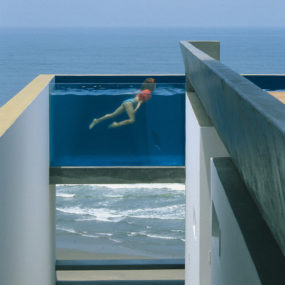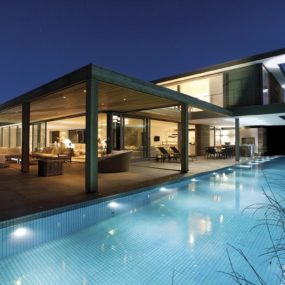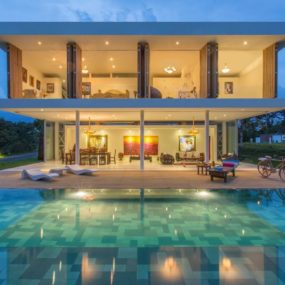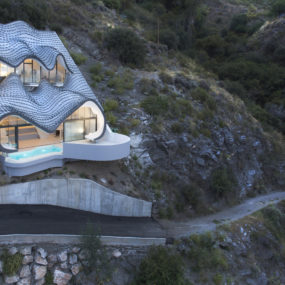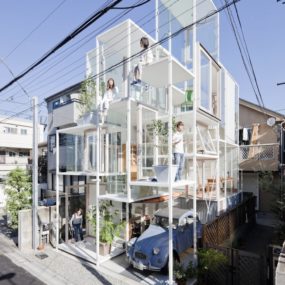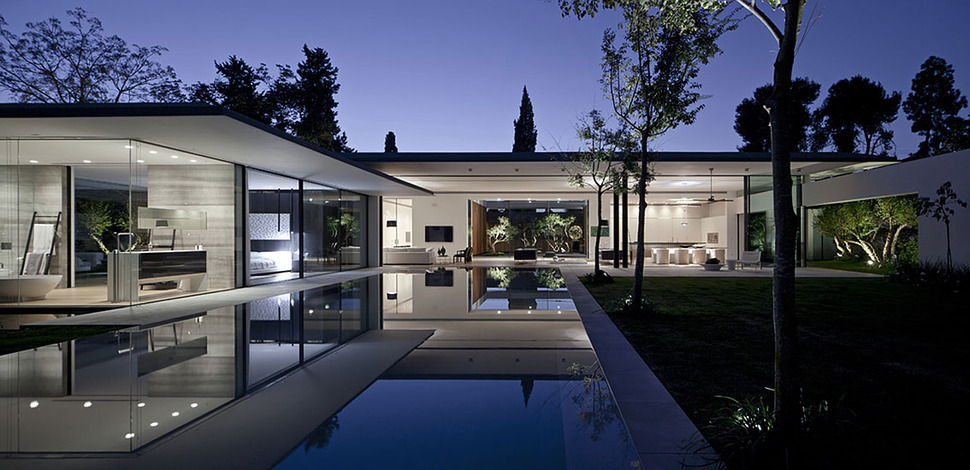
Built in the city of Tel Aviv, this spacious family home takes great care to connect its occupants to the serenity of nature, even within the bounds of a suburban lot. Designed by Pitsou Kedem, the house takes on a different style depending on which edge you’re looking at, but its personality remains the same throughout. While stone and wood walls create a barrier at the front of the house, glass walls and wide-open recreational space dominates the rear. Throughout, entire portions of the home are devoted to nature, including various indoor/outdoor courtyards and garden plots which remind residents of environmental tranquility even in a decidedly modern house. Overhead, a minimal flat rooftop hangs far over the walls of the building, providing shade for each room while extending the boundaries of habitable space outward. The architecture of the home seamlessly blends the desire for a contemporary family home with a need to connect to minimal, natural influences.
Inside, unique furnishings and decor elements help distinguish this home from any other, with designs that combine the visual intensity of modern art with the comfort of recognizable functions. A number of the house’s built-in pieces are custom made to reflect the design of the house’s outside design, helping to bring in serene environmental influences at the same time. The flooring of the house is uniform except in areas of special use (like shower stalls), relying instead on distinct wall finishes and color palettes to make each room distinct. In the end, though, each different theme comes together to form an effectively modern interior that is at once comfortable, connected, and luxuriously contemporary.
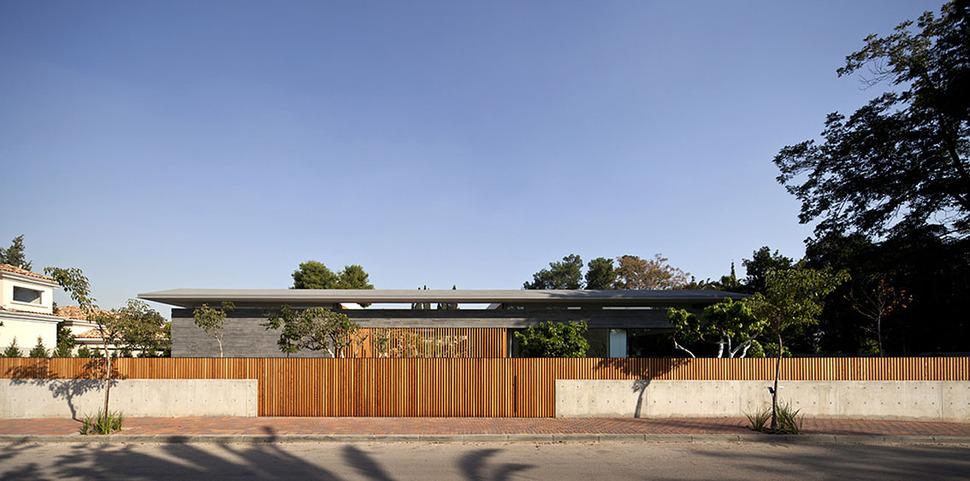
Careful steps were taken to make sure that the home remained private from the street while still projecting a general air of calm, natural openness. To that end, wooden slat walls generally dominate the property’s edge, supplementing the functional concrete barrier wall.
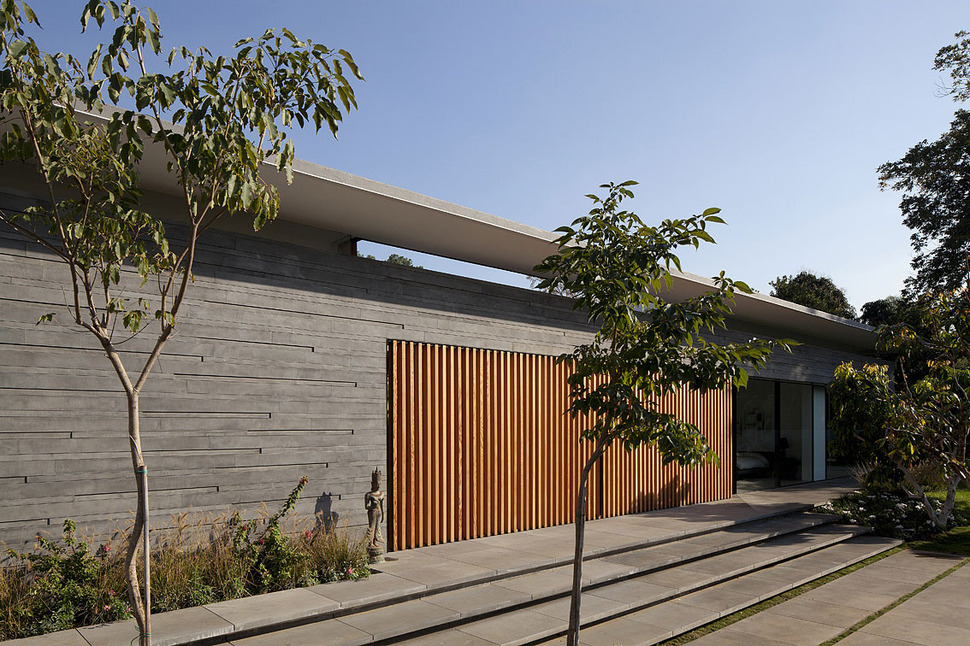
Within the front gate, an elegant fusion of natural and man-made space takes up the front lawn, with a set of low stone steps spanning almost the whole front length of the building to provide access to the main entrance of the house.
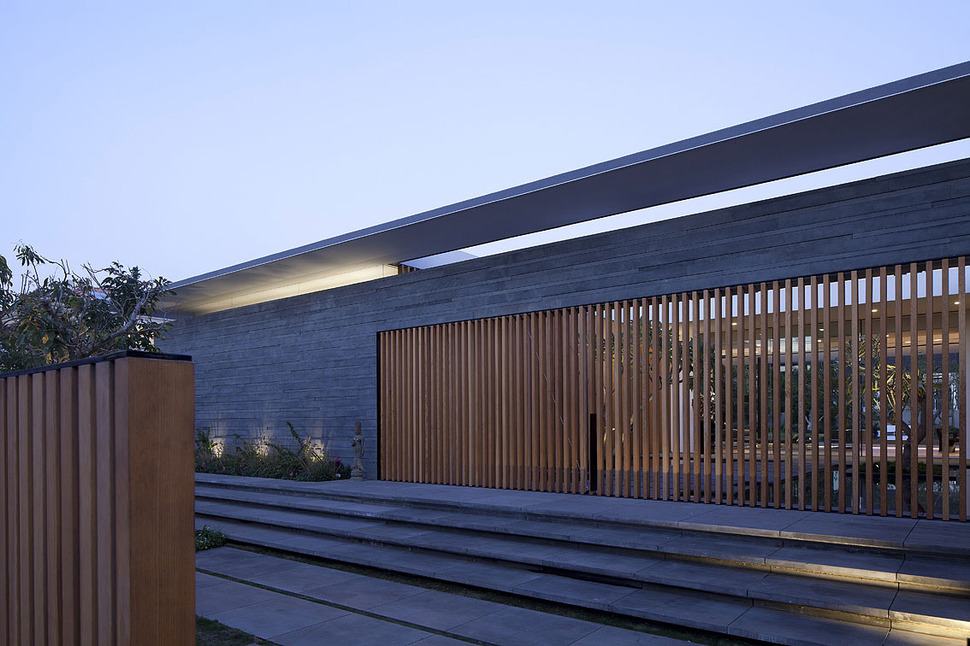
Instead of a traditional front door, this home takes an unconventional approach to entry. A sliding partition of wood slats reveals a zen-inspired walkway behind it, built into the footprint of the house without truly being indoors.
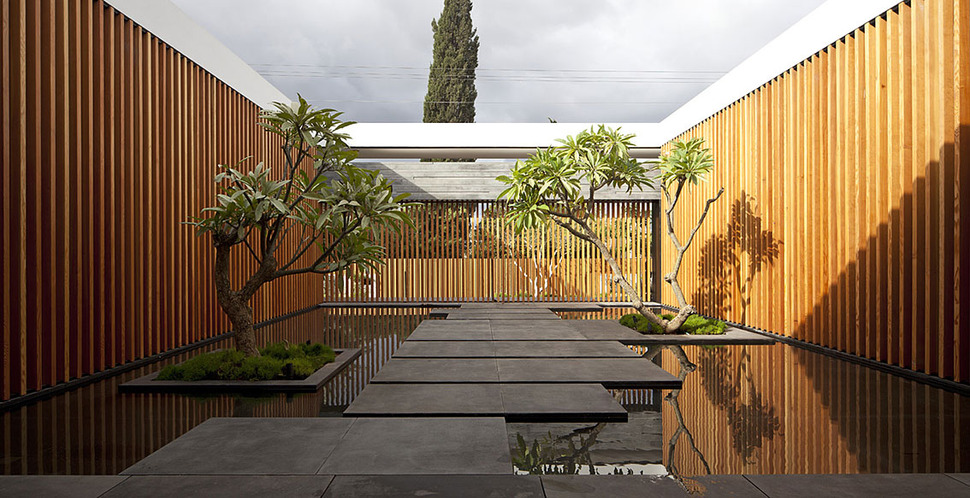
The entry walkway is nature-inspired and calming in a contemporary manner, with offset rectangular steps traveling vaguely through the center of a still reflecting pool. Two trees on either side of the path add further tranquility to the space in a pleasingly asymmetrical fashion.
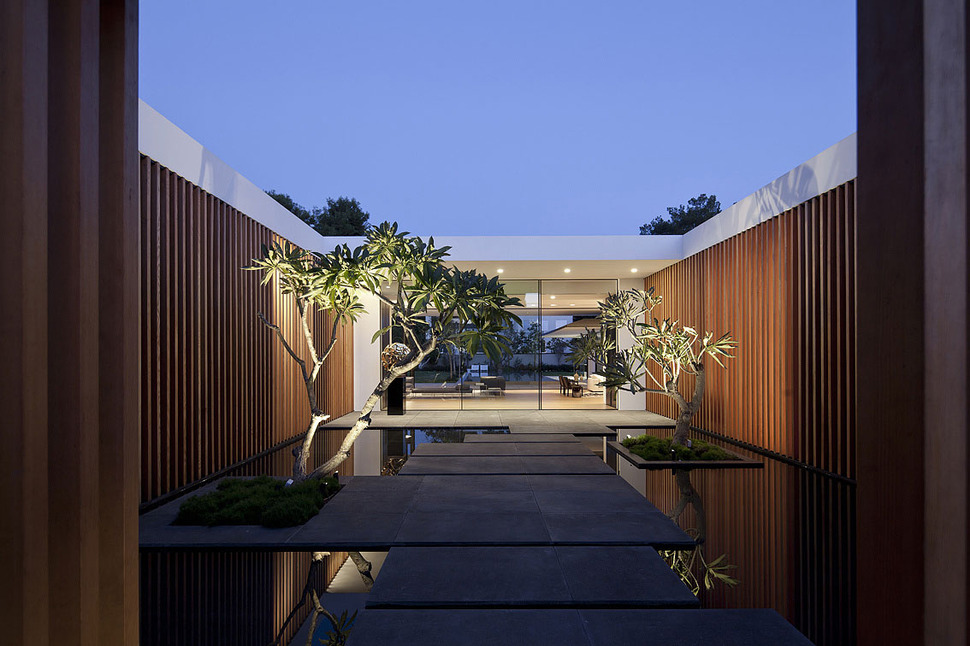
The pathway is kept uncovered, serving as a boundary zone between the home’s lawn and its interior rooms. While its walls and rectangular features give an indoor atmosphere to the space, its open-air nature and the contents of the room connect it inexorably to the environment.
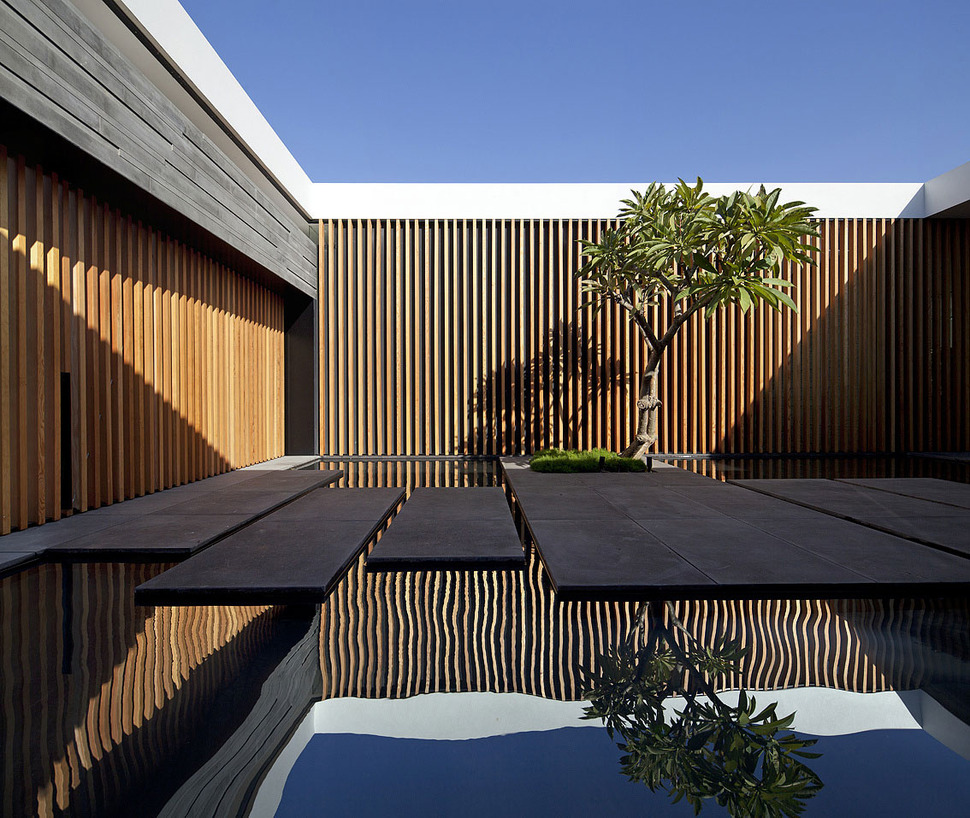
The outermost wall of the courtyard has a strip of dark stone finish at its top, where it borders the true exterior walls of the house. All the other walls are smoothly finished in white, a trait of the building’s insides.
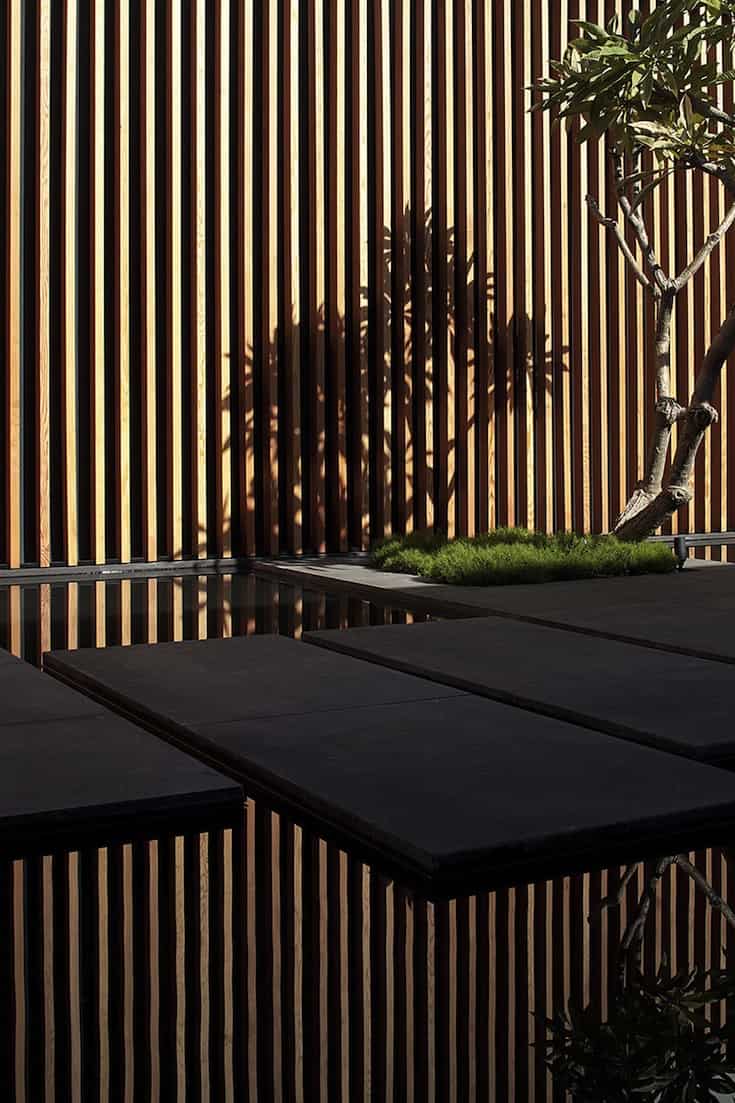
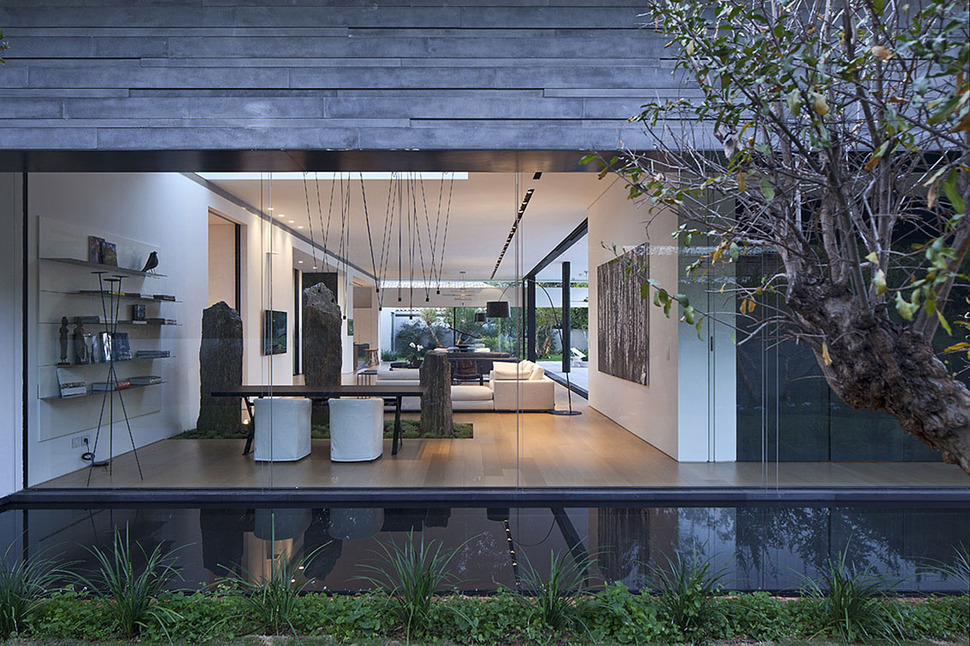
Around a number of the dwelling’s edges and even inside some of its rooms, garden plots and shallow waterways integrate natural cues and a gentle, placid atmosphere. At the sides and rear of the house, the dark stone which dominates its front facade becomes less prevalent in favor of pure glass window walls.
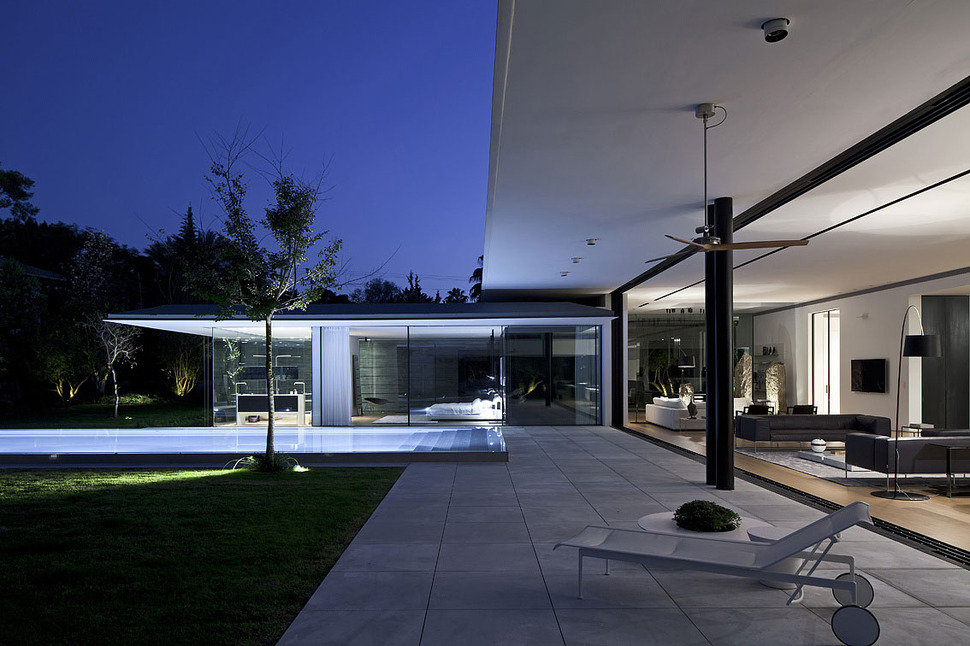
At the rear, the home wraps around a rear patio and pool in a L shape formed by two distinct wings: its public living spaces and a smaller, more personal master suite on one side.
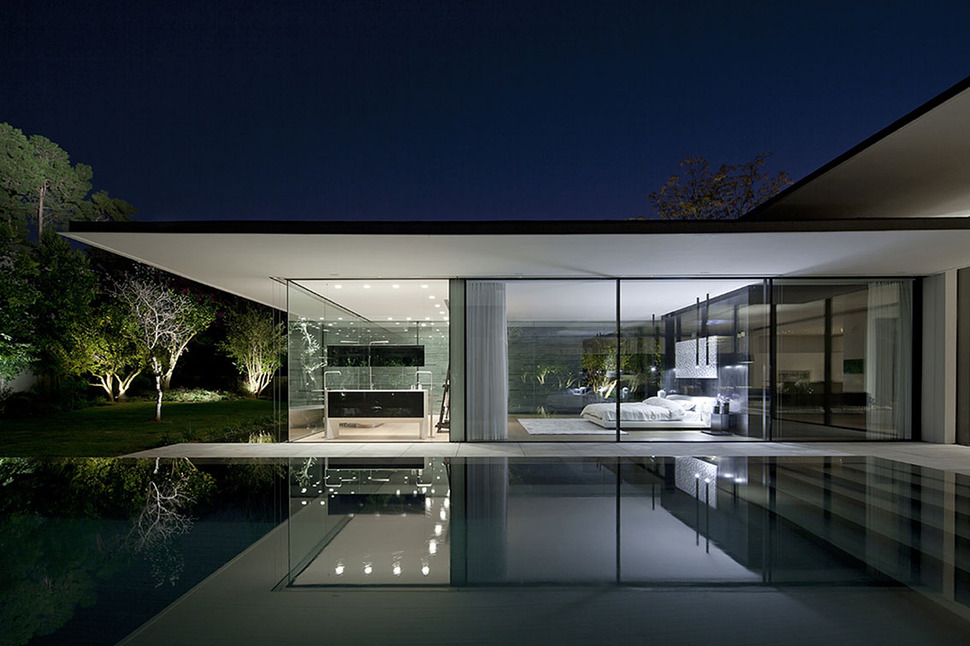
Though the master suite wing is significantly shorter and smaller overall than the main rooms nearby, its rooftop still boasts the same massively thin overhang, protecting it from excess sunlight while accenting the extension of living space outward.
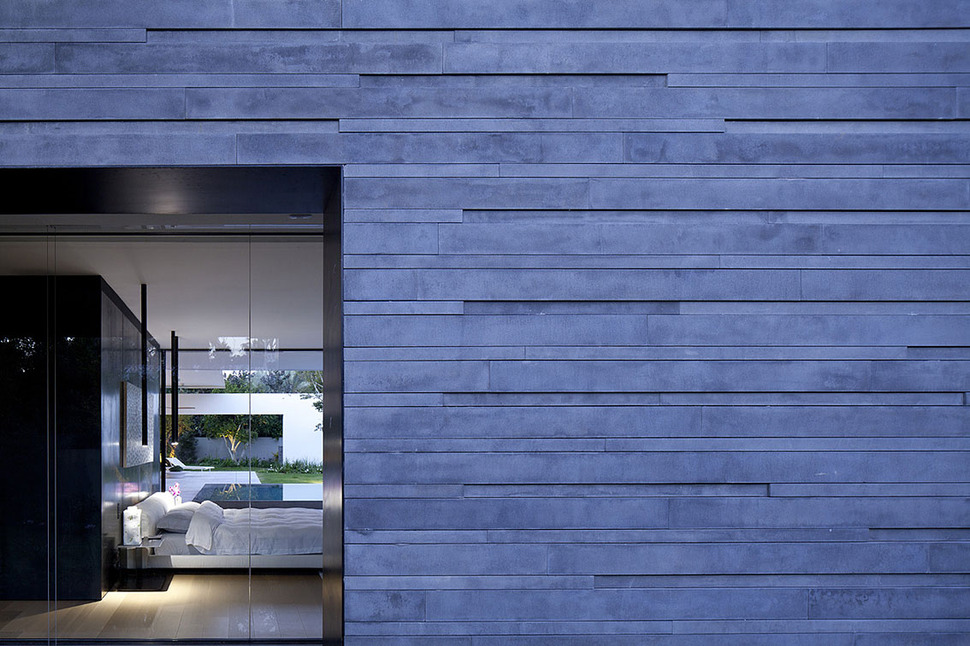
The far side of the master suite trades window walls for the fusion of stone and glass seen near the property edge in the living room. The stone pattern makes use of long, thin strips placed at slightly differing depths, combining traditional materials with ultramodern design flair.
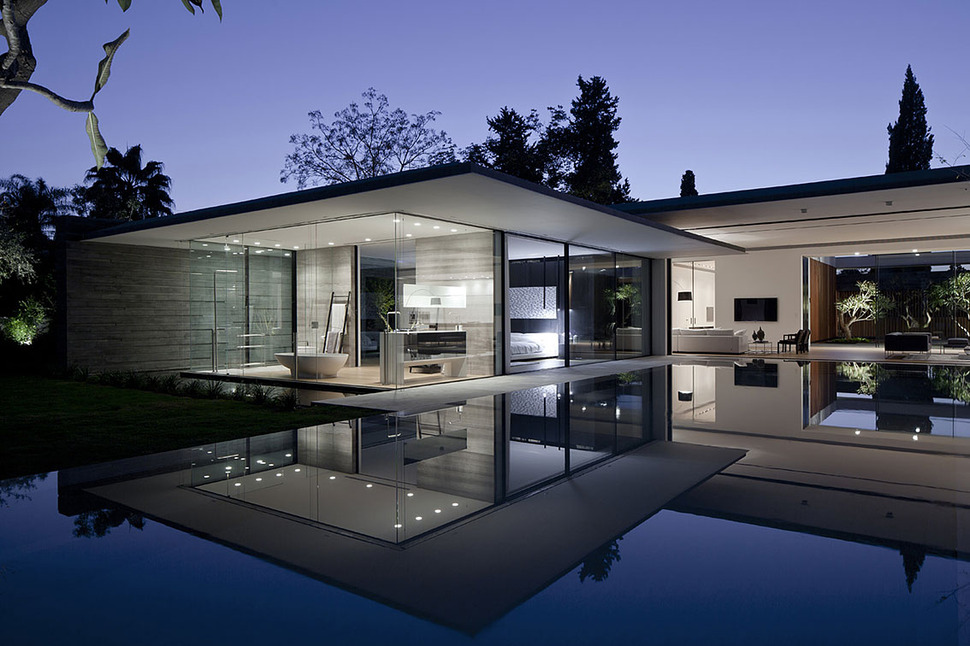
The basin of the residence’s pool is raised above the level of the lawn, leading to an illusion of its waters floating impossibly above the grass next to it. On this rear portion of the building, full glass walls are used wherever possible with no fear of neighbors’ eyes.

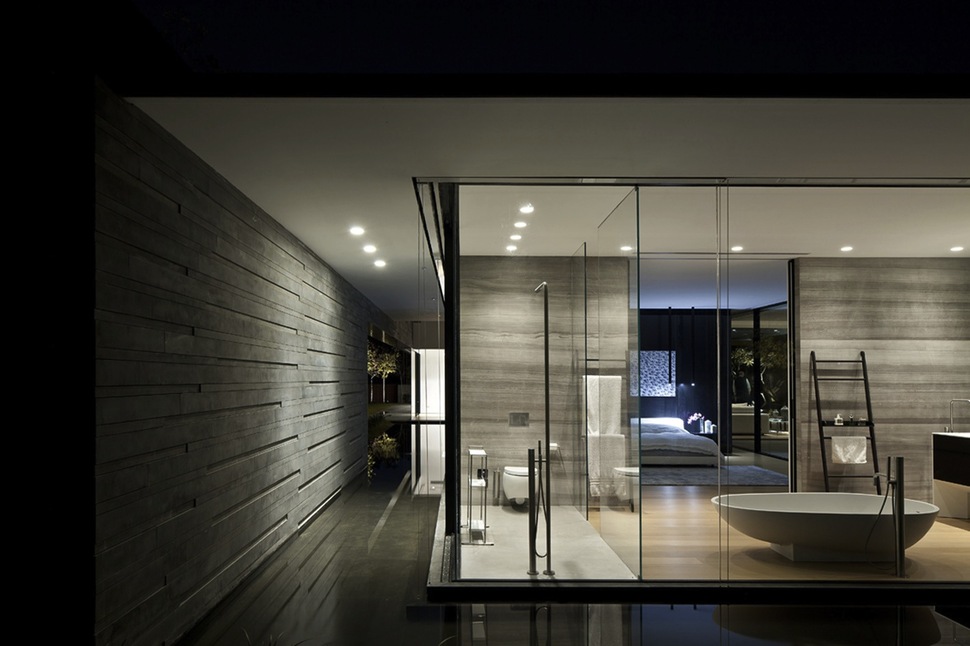
Instead of the main exterior wall forming the border of the master suite directly and creating a variance in glass space from side to side, it is instead offset to allow a pool of water through, letting the bedroom itself employ full window walls while bordered a yard or two further by stone.
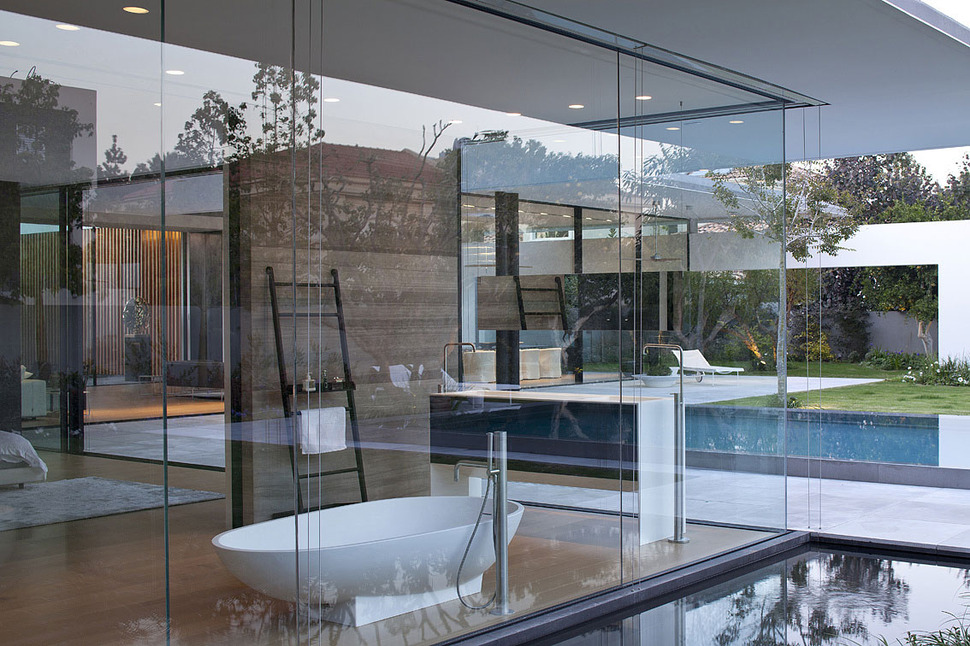
The structure’s glass walls help support the roof through a number of engineering solutions, including using interior walls to form much of the home’s supporting structure and thinning out the roof near its glass-walled edges to reduce gravity’s strain.
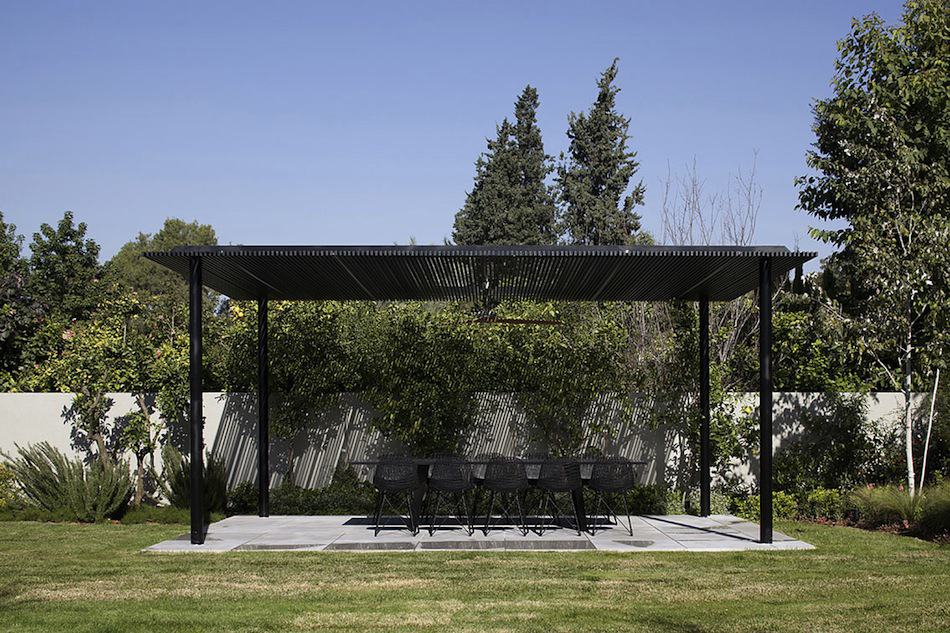
At the corner edge opposite the master suite, a black-hued outdoor dining space employs a tall detached roof structure reminiscent of the height of the dwelling’s public rooms. With a fan overhead, the space fills out the lawn by providing a fully-formed space to host guests on warm evenings.
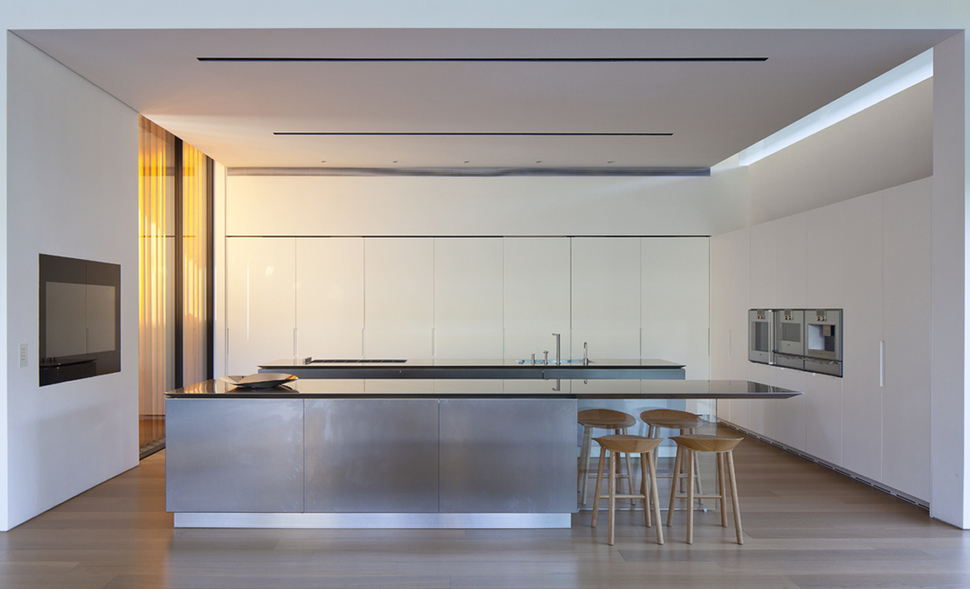
Every feature of the house’s interior takes elements of current high-end residential design and improves them further, while also tying them back to the exterior architecture of the dwelling. The kitchen, for example, utilized a glass-fronted countertop bar reminiscent of the walls and rooftops of the house as a whole, and every cooking appliance and storage area is built quietly into the walls around its double islands.
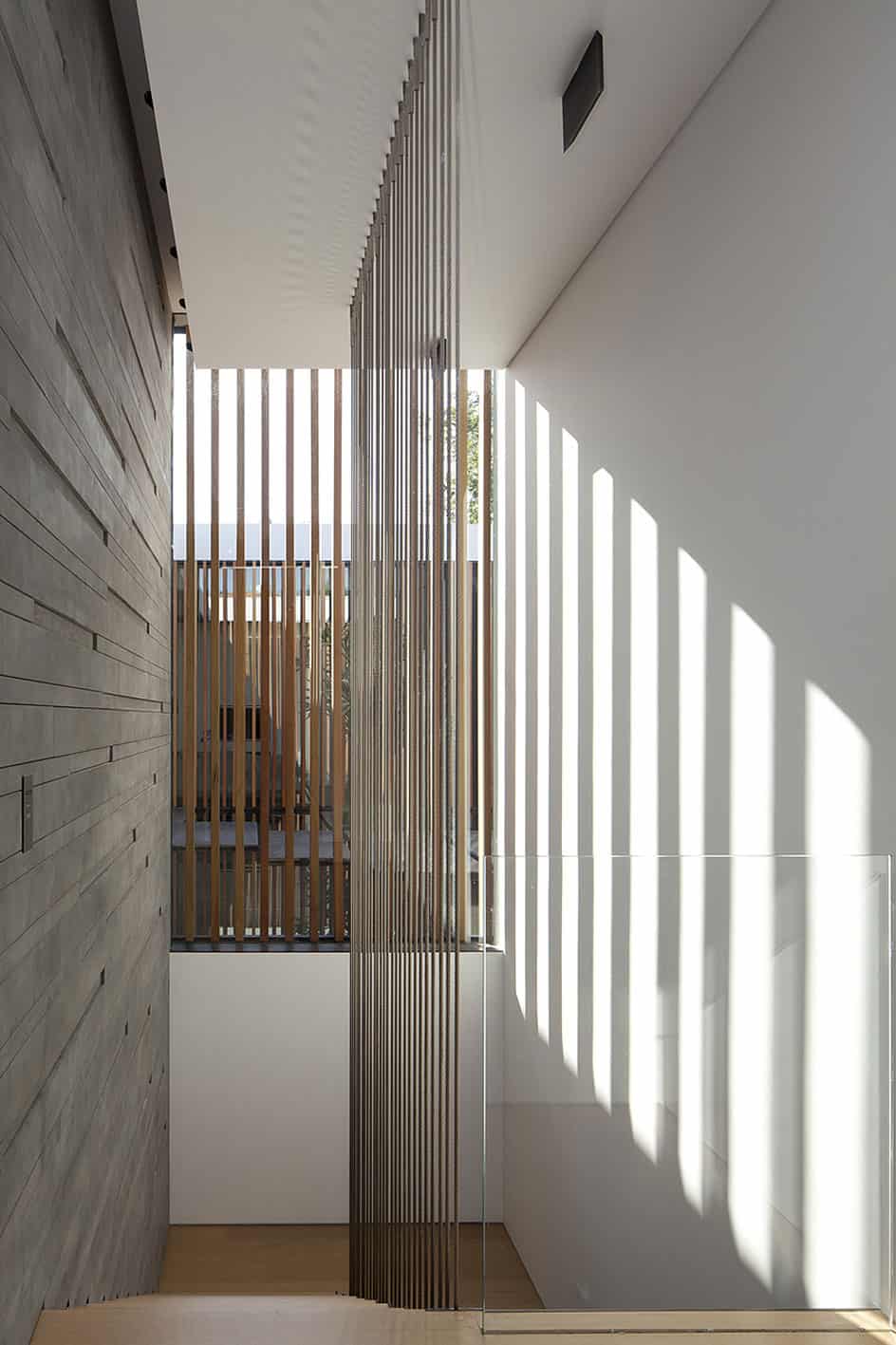
A set of stairs near the front edge of the house utilizes angled glass pieces to cast compelling reflections of the light entering through the slats of the entrance courtyard, employing a blend of indoor and outdoor wall coverings to further accent its connection to the facade.
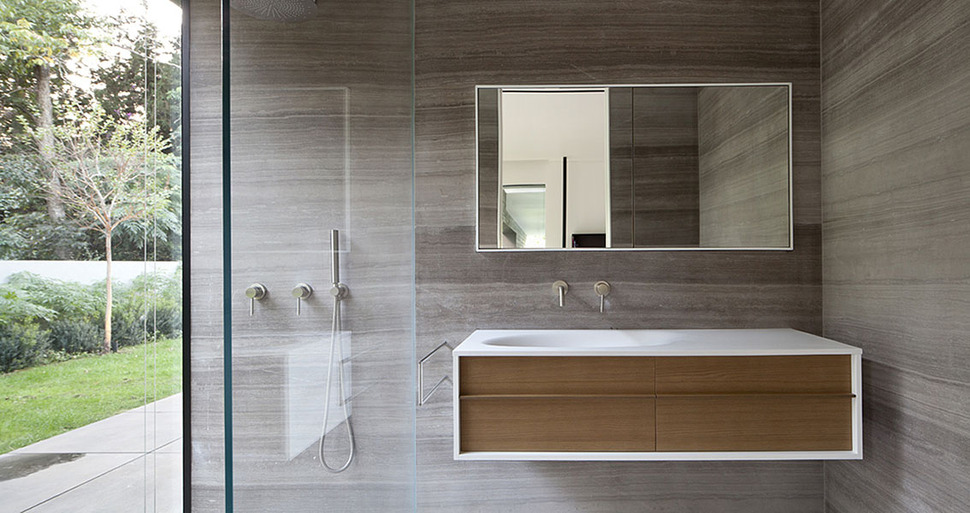
A guest bathroom, the only one with an exterior glass wall besides that of the master suite, trades the rough exterior stone and soft white interior walls for a blend of the traits of both, a smoothed-down natural stone capsule for the shower and vanity.

The master suite itself is composed of two connected rooms, and is accessed through a small opening in the study walls at one edge of the home’s larger wing. The low ceilings of the suite help accent its personal nature, while its glass walls maintain the vast amounts of light which enter any other room.
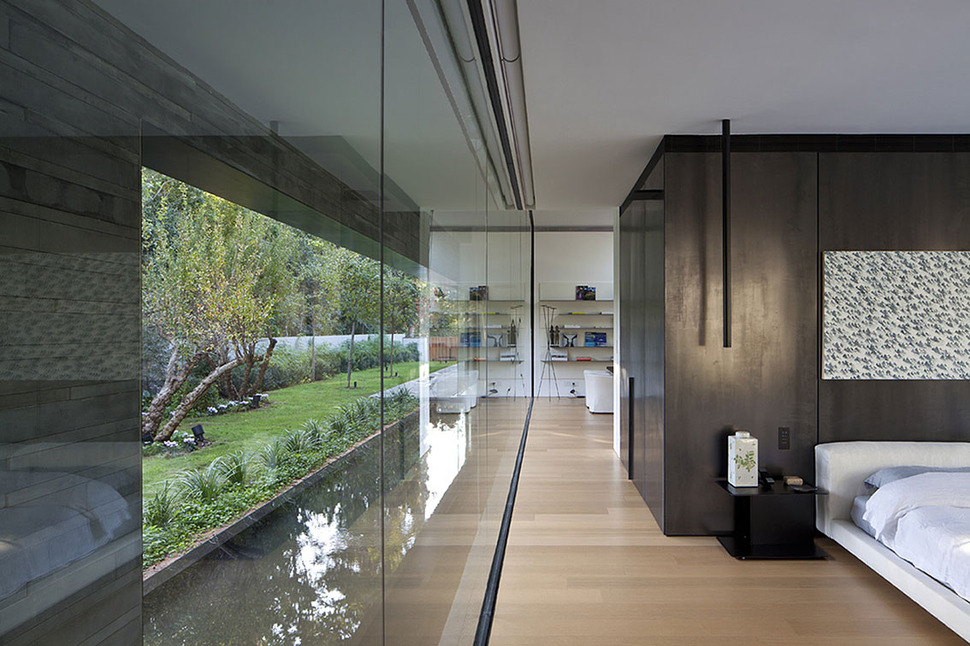
Behind the bed, a rectangular module forms the barrier between spaces, with a walk-in closet contained inside, complete with a hidden door on the corridor between the study and bedroom.
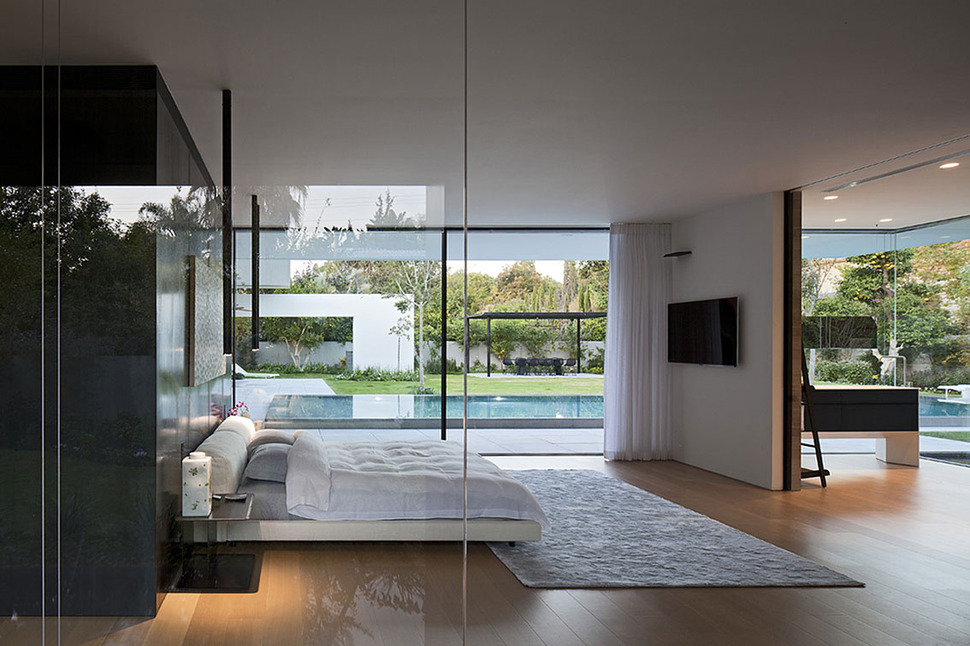
The room features full views of every public area at the rear of the residence, but can be closed off from the view of others by a built-in curtain rack along the ceiling.
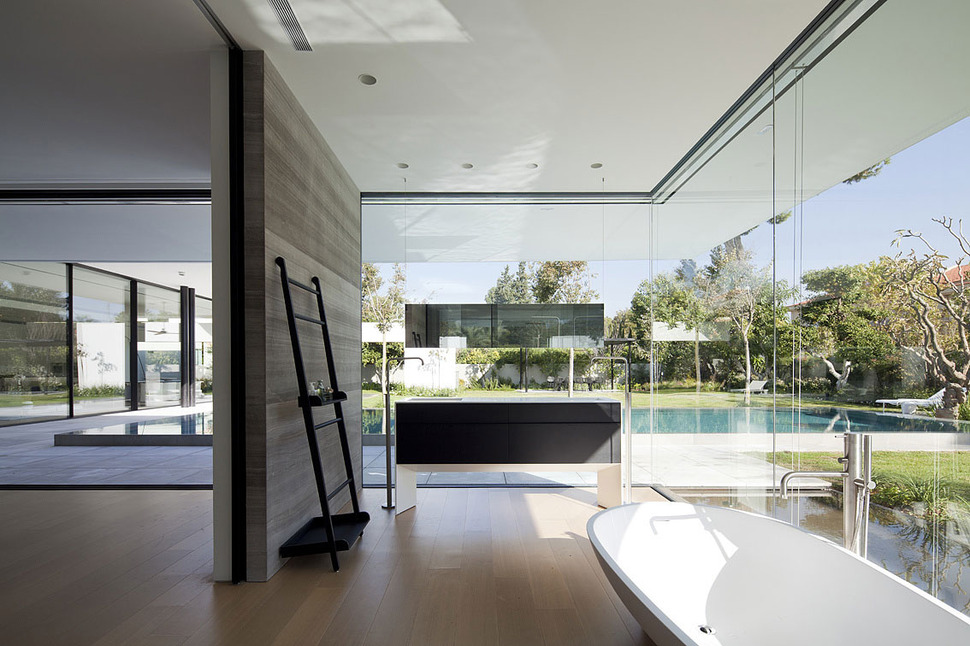
A hole in the wall punctuated by a retractable doorway panel defines the edge of the master bathroom, which features the same smooth stone as was seen earlier in the guest bathroom. The room includes a glass-walled shower, freestanding tub, and a two-person vanity with unique floor-mounted faucets.

Pitsou Kedem


